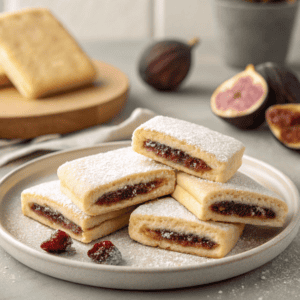Does matcha cause iron deficiency? It’s a question more people are asking as matcha’s popularity grows among health-conscious drinkers. While matcha is packed with antioxidants and mental clarity–boosting compounds, there’s rising concern about how it affects iron absorption, especially for vegetarians, vegans, and those already low in iron.
This article dives into the science behind matcha and iron interactions, who’s at risk, and how to safely enjoy your daily cup without compromising your health. If you’ve ever felt tired despite eating well, it might be time to look at when—and how—you drink your matcha.
Table of Contents
Matcha, Iron, and Everyday Life
Matcha, Iron, and Morning Rituals: My Personal Wake-Up Call
I first started drinking matcha for the calm focus and smooth energy. As a dad juggling family, work, and this recipe blog, I needed something better than coffee’s crash. Matcha was my upgrade. But a few months into my daily cup, I noticed something off—constant fatigue, headaches, even dizziness.
I figured I was just tired from life, but bloodwork told a different story: low iron.
At first, I brushed it off. I eat well. I love my cast iron skillet. But when my doctor asked about my matcha habit, the connection clicked. Turns out, does matcha cause iron deficiency isn’t just a clickbait question.
It’s something real that affects people like me—especially those of us trying to eat healthy without realizing how timing matters. I didn’t want to give up my matcha ritual, but I did want to stop feeling worn out. That’s when I dug into the research, and what I found surprised me.
The Matcha and Iron Debate: Is There a Real Risk?
So, does matcha cause iron deficiency directly? Not exactly. But it can interfere with how your body absorbs iron—especially non-heme iron from plants like spinach, beans, and lentils. The problem lies in compounds like tannins and EGCG (epigallocatechin gallate) found in green tea and matcha.
These antioxidants are usually a good thing, but they also bind to non-heme iron and make it harder for your body to absorb. If you’re sipping matcha alongside your iron-rich breakfast or a supplement, you could be undoing a lot of that nutrition without realizing it.
For me, a typical breakfast used to include scrambled tofu, sautéed kale, and a big cup of matcha—delicious, yes, but not ideal together. I started shifting my matcha to mid-morning, away from iron-heavy meals, and my energy came back fast.
Many folks who follow plant-based diets or take iron supplements (especially women of childbearing age) could unknowingly be running into the same problem.
How Matcha Influences Iron Absorption
Can Matcha Interfere with Iron Uptake?
It’s a valid question: does matcha cause iron deficiency or is it just a misunderstood side effect of timing and diet? The truth is, matcha contains compounds that can affect iron absorption—especially non-heme iron, the type found in plant-based foods. Tannins and EGCG (epigallocatechin gallate), two powerful antioxidants in matcha, may actually bind with this iron and block your body from using it.
Let’s break it down:
- Tannins in matcha latch onto non-heme iron during digestion, preventing it from being absorbed.
- EGCG, the potent antioxidant in green tea, loses its anti-inflammatory power when consumed with iron.
- Drinking matcha too close to meals—especially plant-based ones—may reduce both matcha’s benefits and iron uptake.
- Studies show iron absorption can drop by over 60% if matcha is consumed with an iron-rich meal.
This doesn’t mean you have to give up your morning matcha—it means you need to time it smarter. If you’re making your own lattes, try shifting your ritual to mid-morning, away from iron-heavy meals. If you haven’t explored it yet, check out this easy guide on how to make matcha latte at home for a recipe that fits your schedule and keeps iron absorption in check.
Spacing out your matcha by at least one hour before or after an iron-rich meal or supplement makes a real difference. It’s a simple habit that lets you enjoy both the flavor and the health perks.
Heme vs. Non-Heme Iron: Why Timing Makes a Difference
Still wondering, does matcha cause iron deficiency in everyone? The answer depends on the kind of iron you’re consuming. There are two key types:
- Heme Iron (from animal sources):
- Found in beef, chicken, fish, and pork
- Absorbed easily, with minimal matcha interference
- Non-Heme Iron (from plant sources):
- Found in lentils, tofu, kale, oats, and beans
- More prone to binding with tannins and EGCG
- Often needs a boost from Vitamin C to enhance absorption
Those most affected include:
- Vegetarians and vegans, who rely solely on non-heme iron
- Women between 14 and 50, due to higher iron demands
- People on iron supplements, especially if taken with tea
For these groups, matcha can indirectly contribute to deficiency if poorly timed. Separating your matcha from meals and supplements is the simplest fix.
If your energy has dipped and you’re unsure why, this might be the overlooked piece. Don’t ditch the matcha—just enjoy it in the right window. If you’re already making matcha a daily ritual, making that small adjustment can protect your iron levels while still giving you that boost of clean, focused energy.
Who’s Most at Risk from Iron Blockage?
Is Matcha Safe for Everyone?
The question “does matcha cause iron deficiency” isn’t just for the curious—it’s especially important for people already at risk. While most folks can enjoy matcha without concern, certain groups need to be more careful due to how their bodies absorb iron.
Let’s break down who’s most affected and why:
- Women aged 14 to 50
Monthly iron loss through menstruation already puts women at a higher risk for deficiency. If you’re pairing your matcha with a light breakfast of oats or greens, you might be doubling down on that risk without realizing it. - Vegetarians and vegans
Since non-heme iron from plants is more vulnerable to tannins and EGCG, plant-based eaters are more likely to have iron levels affected by matcha. Many staple foods—like lentils, kale, tofu, and fortified cereals—are less effective when consumed with tea. - Raw food enthusiasts
Raw veggies contain higher levels of oxalates and tannins. Combined with matcha, this can sharply reduce iron absorption. Cooking actually breaks down some of those inhibitors, so raw vegans need to pay even closer attention to timing. - Anyone taking iron supplements
Drinking matcha within an hour of a supplement can limit how much your body retains. If you’re managing anemia or recovering from low iron levels, mistiming your matcha can delay your progress. - Frequent tea drinkers
A single cup won’t cause a problem, but if you’re drinking 3–6 cups of matcha or green tea daily, it starts to matter more. Over time, that level of intake can slowly chip away at iron stores—especially if combined with plant-based meals.
How to Spot the Signs of Low Iron from Matcha
If you regularly drink matcha and notice any of the following symptoms, your iron levels might be worth checking:
- Ongoing fatigue, even with good sleep
- Brain fog or trouble focusing
- Cold hands and feet
- Dizziness or light-headedness
- Pale skin or shortness of breath during mild activity
These aren’t always matcha’s fault—but if you’re asking, does matcha cause iron deficiency, and these sound familiar, spacing your tea from meals might make a difference.
And remember, your matcha routine doesn’t need to stop—just shift it. Many readers have found relief by enjoying their lattes as a mid-morning snack, well after their iron-rich breakfast. You can also check out this list of matcha latte benefits to understand why it’s still one of the best drinks to keep in your day.
Safe Ways to Enjoy Matcha Without Harming Iron Levels
Smart Timing: How to Enjoy Matcha and Maintain Healthy Iron
If you’ve been asking, does matcha cause iron deficiency, the answer depends mostly on how and when you consume it—not the matcha itself. You can still enjoy your favorite latte or tea ritual daily, even if you’re managing iron intake. The key is timing and smart pairing.
To protect your iron levels without sacrificing your matcha habit, here’s what works:
- Wait at least 1 hour after eating iron-rich meals before drinking matcha.
- Or enjoy matcha first thing in the morning, then eat breakfast or take iron supplements an hour later.
- Don’t drink matcha with or immediately after a plant-based meal.
- Take iron supplements with Vitamin C-rich foods, but never with matcha or dairy.
- If you’re eating spinach, lentils, tofu, or oats—save your matcha for later in the day.
Want a gentle way to build this habit? Try making matcha a mid-morning ritual—after breakfast and before lunch. It’s a satisfying break that doesn’t interfere with iron intake and still gives you that focused, calm energy.
For easy drinks that fit your schedule, browse our simple matcha latte recipes. These recipes are designed to be flexible, so you can keep your health goals and still enjoy something delicious.
Matcha vs. Iron: No Need to Choose
Worried you’ll have to cut matcha completely? You don’t. Most health experts agree that drinking 1–2 cups per day, spaced from meals or supplements, is not a cause for concern—even for those managing mild anemia.
If you’re concerned about symptoms or if you’re in one of the higher-risk groups we discussed in Part 3, talk to your doctor about getting your iron checked. That way, you can make adjustments with confidence—without giving up the things you enjoy.
So, does matcha cause iron deficiency? Not directly. But it can contribute if you’re unaware of when and how you drink it. The fix is easy, and the reward is worth it: you keep your iron levels steady and your matcha ritual intact.
Frequently Asked Questions
Does matcha tea affect iron?
Yes, matcha can influence how well your body absorbs iron, particularly from plant-based sources. It contains tannins and catechins that may hinder the absorption of non-heme iron if consumed too close to meals. However, spacing your tea and iron intake apart can reduce this issue significantly.
Can green tea cause low iron levels?
Drinking large amounts of green tea, including matcha, may contribute to reduced iron levels if consumed at the wrong times. This can be more noticeable in individuals who already have difficulty maintaining healthy iron levels, such as those who follow a plant-based diet or menstruating women. To reduce the risk, allow at least an hour between consuming tea and iron-rich foods.
What drinks are bad for iron deficiency?
Beverages that contain substances like tannins or calcium—such as black tea, matcha, coffee, and dairy products—can interfere with iron uptake when consumed alongside iron-rich meals. To support better iron absorption, try drinking these beverages between meals and combine iron sources with fruits or vegetables high in vitamin C.
Who should avoid matcha?
If you’re dealing with iron-deficiency anemia or have low ferritin levels, it’s wise to be mindful of your matcha timing. People who rely mainly on non-heme iron, especially vegetarians and vegans, may want to separate their matcha habit from meals or supplements to get the most nutritional benefit.
Conclusion: Enjoy Matcha Without Sacrificing Your Iron
So, does matcha cause iron deficiency? Not directly—but if you’re drinking it too close to meals or supplements, it can lower how much iron your body absorbs, especially from plant-based sources. The key isn’t giving up matcha. It’s understanding how to enjoy it without interfering with your nutrition.
By simply waiting an hour before or after meals, pairing iron-rich foods with vitamin C, and keeping matcha away from supplements, you can protect your iron levels and still get all the energy, focus, and antioxidant benefits matcha offers.
Whether you’re sipping it straight or trying out our matcha latte recipes, it’s all about timing and balance. Matcha isn’t the enemy—it just needs a little space.
Make your matcha moment intentional, and you can enjoy the calm, sustained energy it brings without compromising your health.





